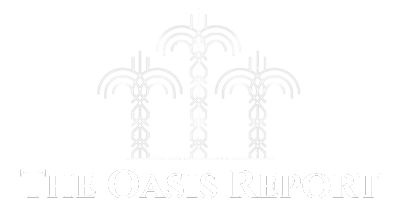US consumer prices likely increased moderately in May amid relatively cheaper gasoline, but the Trump administration’s import tariffs probably started filtering through to other goods, potentially raising underlying inflation pressures.
The Consumer Price Index report from the Labor Department on Wednesday could show the CPI less the volatile food and energy components rising by the most in four months. Economists said the increase in the so-called core CPI would be attributable to higher prices from President Donald Trump’s sweeping import duties. May would mark the start of tariff-related high inflation readings that could last through year end, they said.
Walmart last month said it would begin raising prices in late May and June. Economists said inflation has been slow to respond to tariffs as most retailers were selling merchandise accumulated before the duties took effect.
“Retailers showed remarkable restraint in April,” said Stephen Stanley, chief US economist at Santander US Capital Markets. “May should bring the leading edge of price increases, with the maximum impact coming in June and July.”
The CPI likely increased 0.2% last month after advancing by the same margin in April, a Reuters survey of economists showed. Gasoline prices were mostly lower in May as concerns over global economic growth curbed crude oil prices.
In the 12 months through May, the CPI was forecast increasing 2.5% after rising 2.3% in April. Some of the rise in the year-on-year CPI would reflect last year’s low readings dropping out of the calculation.
Core CPI is forecast to have climbed 0.3%, which would be the biggest gain since January, after rising 0.2% in April. In the 12 months through May, core CPI inflation is estimated to have increased 2.9% after rising 2.8% in April.
The Federal Reserve tracks different inflation measures for its 2% target. The US central bank is expected to leave its benchmark overnight interest rate in the 4.25%-4.50% range next Wednesday while policymakers monitor the economic impact of the tariffs.
STAFFING CRUNCH
The CPI data will come under close scrutiny in the months ahead after the Bureau of Labor Statistics, the Labor Department’s agency that compiles the report and other economic releases including the closely watched employment report, announced last week the suspension of CPI data collection in three cities because of resource constraints.
The BLS like all government agencies has been severely affected by mass firings, voluntary resignations, early retirements and hiring freezes, which are part of an unprecedented campaign by the White House to drastically reduce the size of government and remake it.
The BLS has also announced that it would, effective with the release of the July Producer Price Index data in August, end the calculation and publication of about 350 indexes. That would include data from PPI industry, commodity, final demand-intermediate demand and special index classifications.
Economists said that the BLS had with the CPI data reported a rise in the share of categories for which prices were calculated using a method called different cell imputation, which some viewed as less accurate.
The BLS said on Tuesday its published data met rigorous standards, but did not address staffing issues.
“Data quality is evaluated through measures of variance, bias studies, and assessments of survey methods,” the agency said in a statement to Reuters. “BLS continues to evaluate data quality.”
A former BLS commissioner told Reuters that staff levels were considerably low at the agency.
“I understand that BLS staffing is down by at least 15% now, that’s not reflected in any official numbers yet, because many of them are still being paid,” said Erica Groshen. “They are not at work and it is impinging on the agencies. Also, the hiring freeze means that they can’t be replaced.”
Groshen said the CPI report remained reliable, noting an increased shift towards electronic collection of data.
“At a national level, the standard errors aren’t really affected very much, and the reliability is still good, but it’s really disaggregated at the granular level, where you’re starting to see some real losses,” she said. “It’s just not aiding publication standards, and so they’re not putting it out, but they can still use it as input to the national numbers.”
Other economists agreed, noting that the collection suspension only affected a small area.
“I don’t see that as being a deal breaker,” said Brian Bethune, an economics professor at Boston College. “The problem would be, if they start to have to suppress more of them or drop them out of the survey, then that could be more problematic.”



